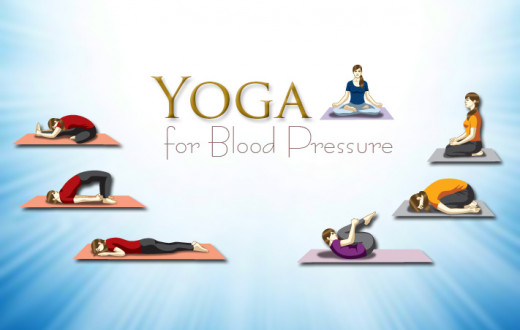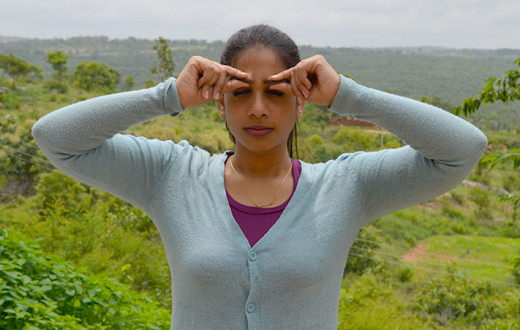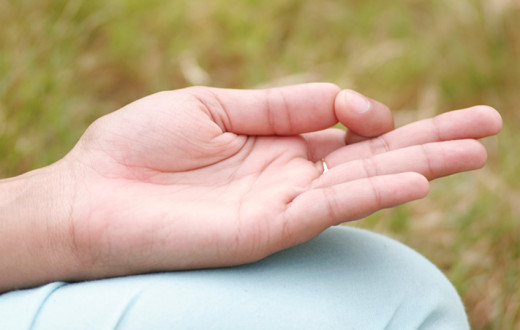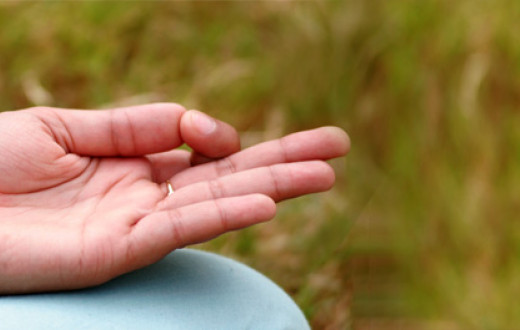Sarvangasana or shoulder stand is a yoga pose wherein the whole body is balanced on the shoulders. It is also a part of the Padma Sadhana yoga sequence. ‘Sarv’ means all, ‘anga’ means part of a body, and ‘asana’ is posture. As the name indicates, Sarvangasana influences the functioning of all parts of your body. This asana is highly beneficial in maintaining the mental and physical health and is also referred as ‘Queen of asanas’.
How to do Sarvangasana (Shoulder Stand)
- Lie on your back with hands by your side.
- With one movement, lift your legs, buttocks and back so that you come up high on your shoulders. Support your back with the hands.
- Move your elbows closer towards each other, and move your hands along your back, creeping up towards the shoulder blades. Keep straightening the legs and spine by pressing the elbows down to the floor and hands into the back. Your weight should be supported on your shoulders and upper arms and not on your head and neck.
- Keep the legs firm. Lift your heels higher as though you are putting a footprint on the ceiling. Bring the big toes straight over the nose. Now point the toes up. Pay attention to your neck. Do not press the neck into the floor. Instead keep the neck strong with a feeling of tightening the neck muscles slightly. Press your sternum toward the chin. If you feel any strain in the neck, come out of the posture.
- Keep breathing deeply and stay in the posture for 30-60 seconds.
- To come out of the posture, lower the knees to forehead. Bring your hands to the floor, palms facing down. Without lifting the head slowly bring your spine down, vertebra by vertebra, completely to the floor. Lower the legs to the floor. Relax for a minimum of 60 seconds.
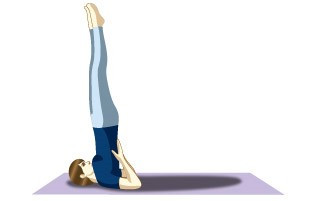
Benefits of Sarvangasana (Shoulder Stand)
- Stimulates the thyroid and parathyroid glands and normalizes their functions
- Strengthens the arms and shoulders and keeps the spine flexible
- Nourishes the brain with more blood
- Stretches the heart muscles by returning more venous blood to the heart
- Brings relief from constipation, indigestion and varicose veins
Contraindications
Consult your physician before doing the Sarvangasana if you have any of the following health conditions: pregnancy, menstruation, high blood pressure, heart problem, glaucoma, slip disc, spondylosis, neck pain and acute thyroid problem.
View All - Yoga Postures lying on back
<< Plow Pose Wind-Relieving Pose >>
Yoga practice helps develop the body and mind bringing a lot of health benefits yet is not a substitute for medicine. It is important to learn and practice yoga postures under the supervision of a trained Sri Sri Yoga teacher. In case of any medical condition, practice yoga postures after consulting a doctor and an Sri Sri Yoga teacher. Find an Sri Sri Yoga program at an Art of Living Center near you. Do you need information on programs or share feedback? Write to us at info@srisriyoga.in
FAQ's on Sarvangasana
"A beginner should practice Sarvangasana following these steps: * Lie on your back. Hands by your side. * Be ready to support your back with your hands. In one go lift your legs, buttocks, and back to come high on your shoulders. * Keeping your legs firm, uplift your heels higher. * Don't press your neck to the floor. Keep it firm. * Breathing in stay in the pose for 30 sec or up to 3 minutes. * Lower our knees, legs, spine, vertebra by vertebra, on the floor. Bring hands by the side. Relax for a minute."
"The steps to follow for Sarvangasana are: * Lie on your back. Hands by your side. * Be ready to support your back with your hands. In one go lift your legs, buttocks, and back to come high on your shoulders. * Keeping your legs firm, uplift your heels higher. * Don't press your neck to the floor. Keep it firm. * Breathing in stay in the pose for 30 sec or up to 3 minutes. * Lower our knees, legs, spine, vertebra by vertebra, on the floor. Bring hands by the side. Relax for a minute."
Stay in Sarvangasana pose for 30 seconds. If you feel comfortable slowly start increasing the time up to 3 minutes in the pose. Relax for a minute after the asana.
"Sarvangasana is good for: * Strengthens limbs * Spine becomes flexible * Constipation * Varicose veins * Stimulates the thyroid and parathyroid glands * Blood circulation in the brain improves"
"People shouldn't do Sarvangasana: * with blood pressure, heart problems, glaucoma, slip disc, spondylosis, and acute thyroid problem * in pregnancy and menstruation"
Don't do Parvatasana in spinal injury and spinal abnormalities, frozen shoulder and arthritis.
"The hardest yoga asanas are: * Hero pose * Reclining hero pose * Grasshopper pose * Saddle pose * Crow pose"
Shoulder stand pose
If your body is not flexible enough the stretches in front of your ankles and lower legs hurt in hero pose. The tightness in your quadriceps increases the pain in your knees.
Crow pose is difficult for those who do not have flexibility and strength in their hands and arms.
"The preparation of the grasshopper pose is the balancing pose on the arms. Follow the steps to achieve the grasshopper pose: * Eka Pada Utkatasna * Parivrtta Eka Pada Utkatasna * Keep bending and place your hands on the floor shoulder-width apart * Lift Your Left Foot off the floor * Extend Your Left Leg * Don’t forget to repeat on another side"
Supta Virasana or reclined Hero pose is Saddle pose
"Start with Hero pose or virasana. Follow the steps for the Reclining Hero pose: * Lie back on a bolster. * If your knees play apart or hurt, use more support under your back. * If your head tilts backward, place a blanket underneath it. * Extend your arms overhead and clasp your elbows with your hands. * Bring your hands down to the floor by the sides of your thigh. * Keep your knees close to each other. * Take 5-10 long breaths in the posture. * Come out from the pose by raising your forearms first. Press your hands on the floor to a sitting pose. * If there is pain at any point release the pose and return to your forearms."
"* Start with Vajrasana. * Knees hip-width apart. * Toes down on the floor. * Inhale to lift your hips and exhale to open the knees and sit your hips between the feet. * Inhale to lengthen the spine and exhale to settle down in the pose. * Take a few long deep breaths in the pose. * Slowly lift your hips to come out from the pose."

